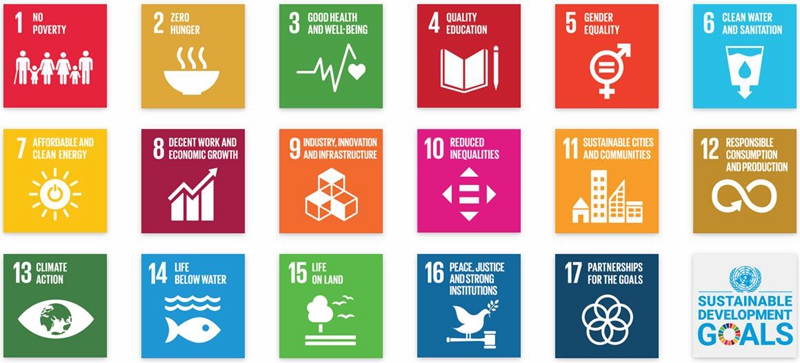We are strongly committed to organic cotton and ecoRest™ recycled bedding, encouraging organic approaches to farming through market driven signals touches the SDGs in the following ways:
1. NO POVERTY: Organic cotton is a market-driven solution that shifts farmers to more diverse incomes through inter-crop and rotational crops, reducing reliance on a mono-crop commodity culture.
2. ZERO HUNGER: Organic cotton is grown alongside and in rotation with food crops. Seeds can be saved and sold locally, reducing reliance on seed companies and providing additional incomes.
3. GOOD HEALTH AND WELL-BEING: Organic farmers are not exposed to toxic chemicals.
4. QUALITY EDUCATION: Higher returns result in organic cotton farming communities being able to offer quality education, often through the investment of supply chain partners
5. GENDER EQUALITY: About 10% of the world’s certified organic farmers are women.
6. CLEAN WATER AND SANITATION: Organic cotton does not use toxic pesticides or synthetic fertilizers therefore avoiding chemical contamination of local water sources. Organic soil is also able to retain water, increasing efficiency.
7. AFFORDABLE AND CLEAN ENERGY: Organic farming communities are increasingly using solar and biogas as an energy source, particularly where access to electricity is limited, such as in regions of Africa and India.
8. DECENT WORK AND ECONOMIC GROWTH: Principles of health, ecology, fairness and care are the basis of organic agriculture. Many organic farmers are also certified to Fair Trade standards, allowing them to benefit from additional social and trading guidelines.
9. INDUSTRY, INNOVATION AND INFRASTRUCTURE: By committing to the Fair Fashion Blended Challenge, you are building a resilient cotton industry and reducing risk for farmers.

10. REDUCED INEQUALITIES: Organic cotton production has put nations rich and poor on par with one another. Higher financial returns help raise to local income, empower farmers and elevate them into positions of leadership and governance within rural communities.
11. SUSTAINABLE CITIES AND COMMUNITIES: Higher financial return, absence of toxic chemicals (and illness), alongside the satisfaction of working in harmony with nature, encourages more people to stay on the land.
12. RESPONSIBLE CONSUMPTION AND PRODUCTION: Organic cotton is grown in rotation or inter-cropped with other agricultural products mitigating climate change by building soil health and biodiversity.
13. CLIMATE ACTION: Organic soil sequesters more carbon as a key component in soil building and improved soil fertility.
14. LIFE BELOW WATER: The elimination of toxic and persistent pesticides and artificial fertilizers reduces the nutrient and and run-off into surface waterways.
15. LIFE ON LAND: Organic cotton farms build strong soil and biodiversity by rotating crops, minimizing tillage, and planting cover crops.
16. PEACE, JUSTICE AND STRONG INSTITUTIONS: Many organic cotton-farming operations are cooperatives, respecting democracy, interdependency, stability, human rights and effective governance.
17. PARTNERSHIP FOR THE GOALS: Organic cotton production promotes international trade, helping developing countries increase export of high value cash crops, while fostering local markets for fresh food provision.
These are the reasons we insist on recommending our organic cotton products to our customers.
